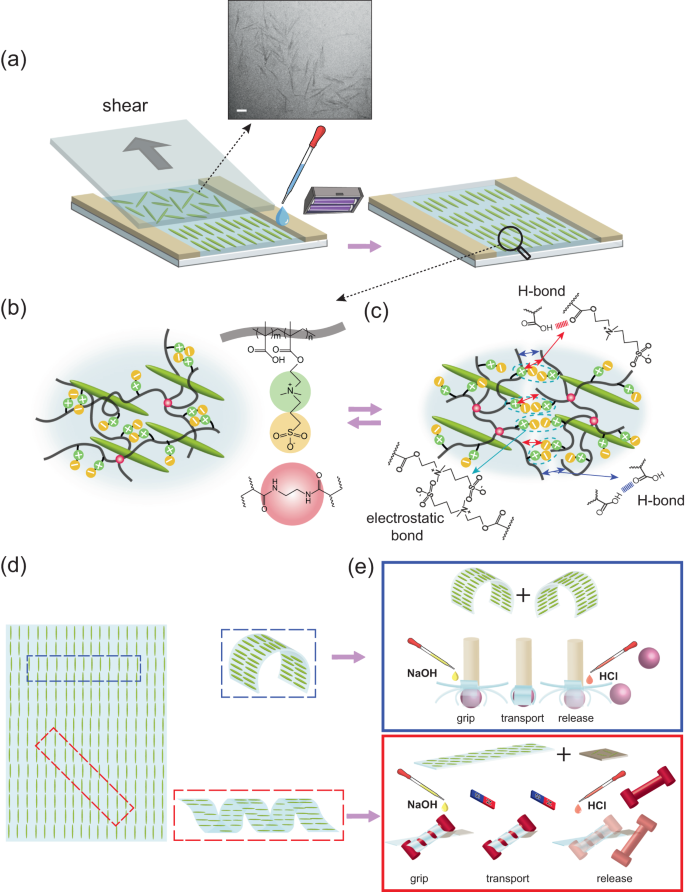Science Daily October 23, 2023
Introducing anisotropic properties, and shape-change programmability to responsive hydrogels promises a host of opportunities in the development of soft robots. An international team of researchers (Canada, Germany) synthesized pH-responsive hydrogel nanocomposites with predetermined microstructural anisotropy, shape-transformation, and self-healing. They were largely composed of zwitterionic monomers and asymmetric cellulose nanocrystals. While the zwitterionic nature of the network imparted both self-healing and cytocompatibility to the hydrogel nanocomposites, the shear-induced alignment of cellulose nanocrystals rendered their anisotropic swelling and mechanical properties. They utilized a cut-and-paste approach to program reversible, and complex deformation into the hydrogels. As a proof-of-concept, they demonstrated the transport of light cargo using tethered and untethered soft robots made from the hydrogels. The researchers believe the material system they proposed introduces a powerful toolbox for the development of future generations of biomedical soft robots… read more. Open Access TECHNICAL ARTICLE

System concept. Credit: Nature Communications volume 14, Article number: 6108 (2023)